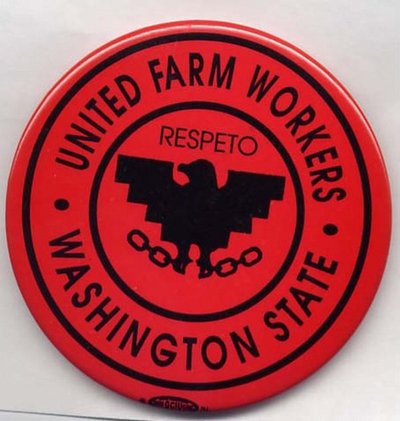October 5, 2009
No longer lost in the weeds: History of farmworkers comes to life on Web
César Chavez and California’s San Joaquin Valley are what come to most people’s minds when farmworkers’ struggles for decent wages and working conditions are mentioned.
But Washington has it own history of the people who have toiled in the state’s fields and orchards for nearly a century and a half and those who tried to change existing conditions. That story has gone largely untold. That’s no longer the case because a group of University of Washington students and faculty have developed a new multimedia Web page that tells this story.
The new Farm Workers in Washington State History Project special section is part of the Seattle Civil Rights and Labor History Project Web site. The section was just activated after several years of development. It features a detailed history of the state’s farm workers, a timeline of major events, oral histories with some of the participants, photographs and an archive of nearly 500 articles from newspapers around the state.
“One of the motivating factors for gathering this material is that Latino and Indian history is glossed over,” said Oscar Rosales Castaneda, a UW graduate and presently a freelance writer and scholar who wrote much of the content on the Web site. “I can’t recall any mention of it in high school history classes I took in the Yakima Valley.”
Other major contributors to the project are Sharon Walker, a UW master’s degree graduate of the Evans School of Public Affairs who conceived the idea and now works in the university’s academic affairs office; Maria Quintana, a UW history doctoral student; James Gregory, a UW history professor and director of the Harry Bridges Center for Labor Studies; and Erasmo Gamboa, an associate professor of American ethnic studies and history.
“There were many surprises in researching this,” said Quintana. “In charting the demography in Washington, for example, we found that the majority of farmworkers were white workers. It remained this way until the 1980s when Latinos became the majority. Previously, I thought farm workers to be Latinos and Asians who were easily exploited.”
“The focus on farm workers gets at the issues of inequality in society,” said Gamboa. “You could also tell the story of Native Americans, Asians and white farm workers. This is a story that repeats itself.”
Gregory said this project is ongoing and he and Gamboa will continue to encourage student research and writing for future contributions. In addition, resource materials and a teaching guide are available for use at the middle- and high-school and college levels and can be downloaded from the Web site.
The project was funded by the UW’s Harry Bridges Center for Labor Studies and the Center for the Study of the Northwest. The Web site may be viewed at: http://depts.washington.edu/civilr/farmwk_intro.htm.
###
For more information, contact Rosales Castaneda at 509-307-0611 or o.rosales.castaneda@gmail.com or Quintana at 206-446-5858 or mquin@u.washington.edu

